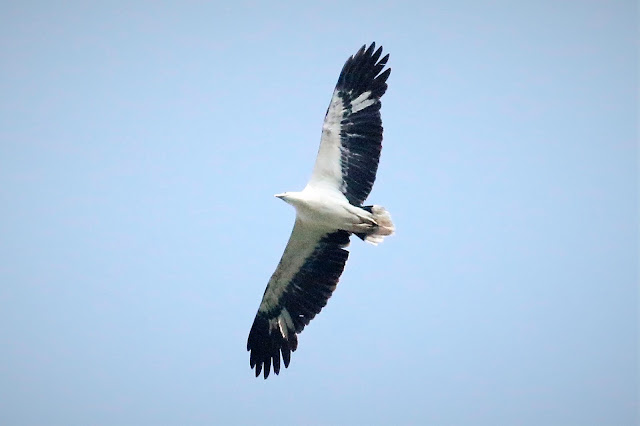Aktiviti melihat burung atau singkatnya "memburung" adalah satu hobi yang sihat dan manfaat. Tua dan muda semuanya boleh menceburi hobi ini. Kalau isteri / suami yang jenis adventurous, boleh juga bawa sekali. Hobi melihat burung dalam ertikata sebenar secara umumnya merangkumi 3 process:
i) memerhati burung
ii) mengenalpasti burung
iii) mencatat burung yang dilihat
i) MEMERHATI BURUNG
Sehingga kini terdapat sebanyak 785 species burung yang telah dikenalpasti di Malaysia (sumber: MyBIS.gov.my, 2016) dan 1,375 species di seluruh dunia (sumber: Birdlife International, 2015). Kumpulan burung-burung yang dilihat pula secara umumnya boleh dibahagikan kepada 3 jenis:
i) burung tempatan
ii) burung hijrah (migrant)
iii) burung perantau (vagrant)
Burung-burung di Semenanjung Malaysia boleh ditemui di beberapa habitat. Antara habitat yang paling umum ialah di sekitar taman rekreasi yang berdekatan ataupun di pinggiran hutan di kawasan luar bandar. Lain-lain kawasan yang boleh diterokai ialah seperti hutan simpan kekal di Taman Negara, kawasan gunung, tasik, persisiran pantai dan luatan. Bahkan sawah padi juga terdapat kepelbagaian species burung yang menakjubkan. Peralatan asas untuk melihat burung adalah seperti berikut:
iii) kamera DSLR
Peralatan di atas boleh membantu anda untuk mengenalpasti burung yang dilihat selain daripada melihat keindahan alam. Waktu yang paling sesuai untuk melihat burung adalah di waktu pagi - sejuk dan nyaman.
ii) MENGENALPASTI BURUNG
Mengenalpasti burung adalah satu process yang paling penting dalam aktiviti memburung. Untuk mengenalpasti burung yang dilihat secara tepat, terdapat beberapa sumber rujukan yang boleh digunakan. Walaupun kebanyakan sumber adalah dalam bahasa Inggeris namun nama saintifik burung biasanya jarang berubah. Misalnya nama saintifik untuk Punai Kericau (Pink-Necked Green Pigeon) adalah "Trevon vernans", Itik Belibis (Lesser Whistling Duck) adalah "Dendrocygna javanica ", dan sebagainya. Sumber tempatan yang boleh anda rujuk secara percuma buat masa ini ialah melalui laman "mybis.gov.my". Walaupun laman tersebut masih dalam proses penambahan species namun ia adalah satu-satu sumber yang sedia ada di mana nama burung-burung tempatan dan nama saintifiknya boleh ditemui. Biasanya, pengemar melihat burung akan membuat "cross-reference" dengan buku panduan burung di lapangan (field guide) sebelum mencatatkan burung yang dilihat. Sumber lain untuk mendapat maklumat dengan lebih cepat ialah dengan menyertai kursus melihat burung atau mengikut para pengemar melihat burung yang berpengalaman. Ada setengah pengemar melihat burung pula mengenalpasti burung dengan menggunakan gambar yang dirakam oleh kamera DSLR. Kaedah ini dikatakan dapat mengenalpasti jenis burung yang dilihat dengan lebih tepat.
iii) CATATAN BURUNG YANG DILIHAT
Untuk mencatat burung-burung yang telah dikenalpasti, terdapat beberapa cara yang biasa digunakan oleh para pengemar burung di lapangan. Antara kaedah yang kerap dan paling mudah ialah dengan menulis nama burung di buku nota. Selain daripada nama burung, tarikh dan lokasi di mana burung dilihat juga perlu dicatatkan. Ada setengah pengemar melihat burung pula menggunakan gambar yang dirakam oleh kamera DSLR sebagai sumber catatan. Dengan kemajuan yang dicapai dalam bidang sains, anda kini boleh memasukkan nama burung-burung yang dilihat secara atas talian dengan menggunakan applikasi (app) yang boleh dimuat turun kedalam telefon bimbit.
Tak kira tua atau muda, semua boleh menyertai hobi ini.
Penglibatan kaum wanita di semua bidang sudah semakin ketara - dari sukan lasak seperti motor cross sampai lah aktiviti melihat burung. Sampai sanggup tinggal pinggan mangkuk untuk melihat keindahan alam.
Berikut adalah beberapa jenis burung yang masih boleh ditemui di beberapa habitat di Semenanjung Malaysia:
 |
| Itik Belibis |
 |
| Punai Kericau (betina di kiri, jantan di kanan) |
 |
| Takur Tukang Besi (Megalaima haemacephala) Jantan di kiri, Betina di sebelah kanan |
 |
| Gembala Kerbau (Acridotheres tristis) |
 |
| Burung Tekukur (Streptopelia chinensis) |
 |
| Tekukur Merah (Streptopelia tranuebarica) |
 |
| Pekaka Kerdil (Ceyx erithaca) |
 |
| Burung Layang-Layang Pasifik (Hirundo tahitica) |
 |
| Burung Rapang (Vanellus indicus) |
 |
| Burung Camar (Caspian) - (Hydroprogne caspia) |
 |
| Burung Rapang Emas Pasifik (Pluvialis fulva) |
 |
| Berek-berek Ekor Biru/Sawah (Merops philippinus) |
 |
| Kedidi Hutan (Dendronanthus indicus) |
 |
| Pekaka Rimba (Alcedo euryzona) |
 |
| Punai Daun (Treron olax) |
 |
| Sambar Biru Bakau (Cyornis rufigastra) - jantan |
 | |
|
 |
| Sambar Siulan Bakau (Pachycephala cinerea) |
 |
| Merbah Kapur (Pycnonotus goalivier) |
Ta Dah !
Sekian Terima Kasih dan Selamat Menikmati Keindahan Alam Semulajadi khususnya burung-burung di Semanjung Malaysia.














































